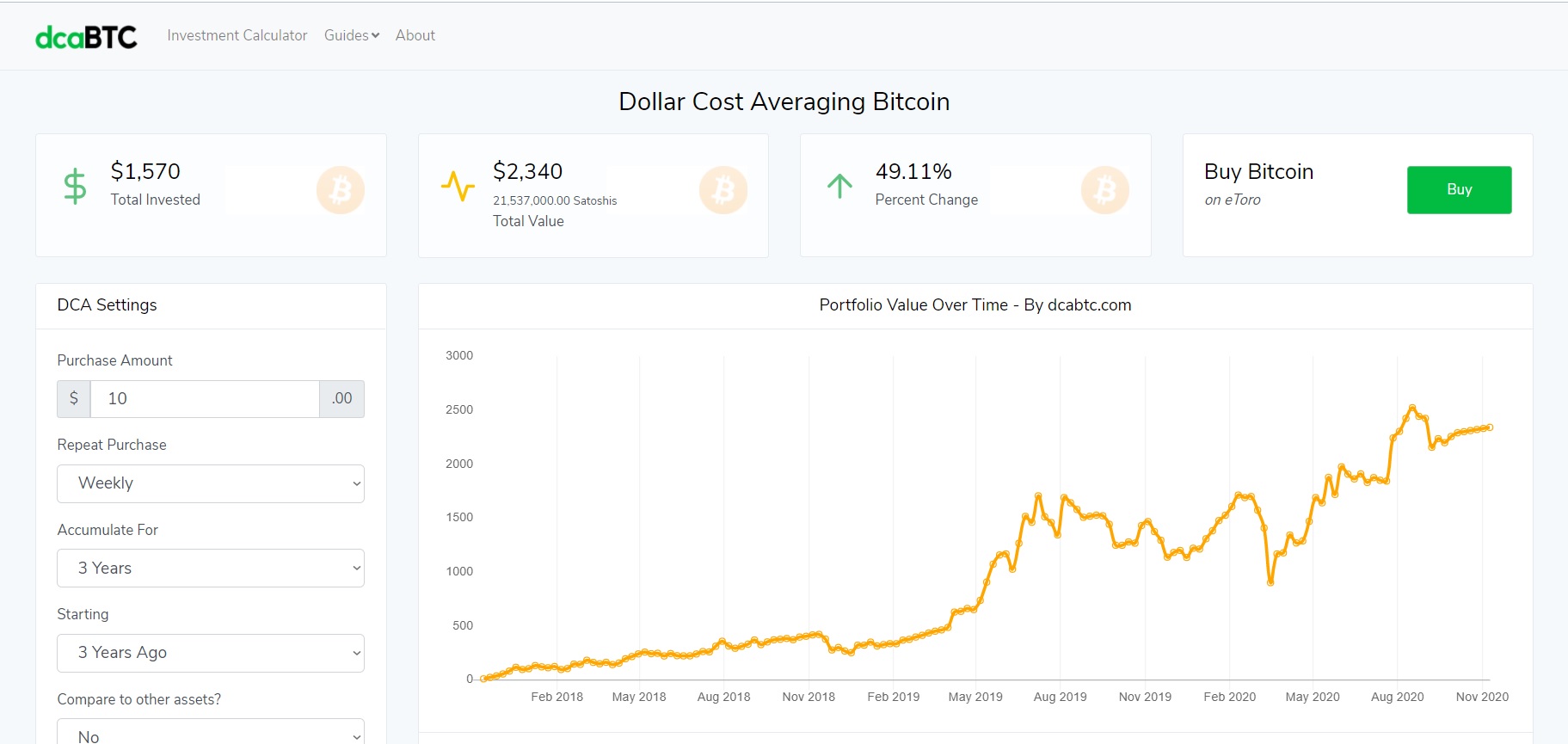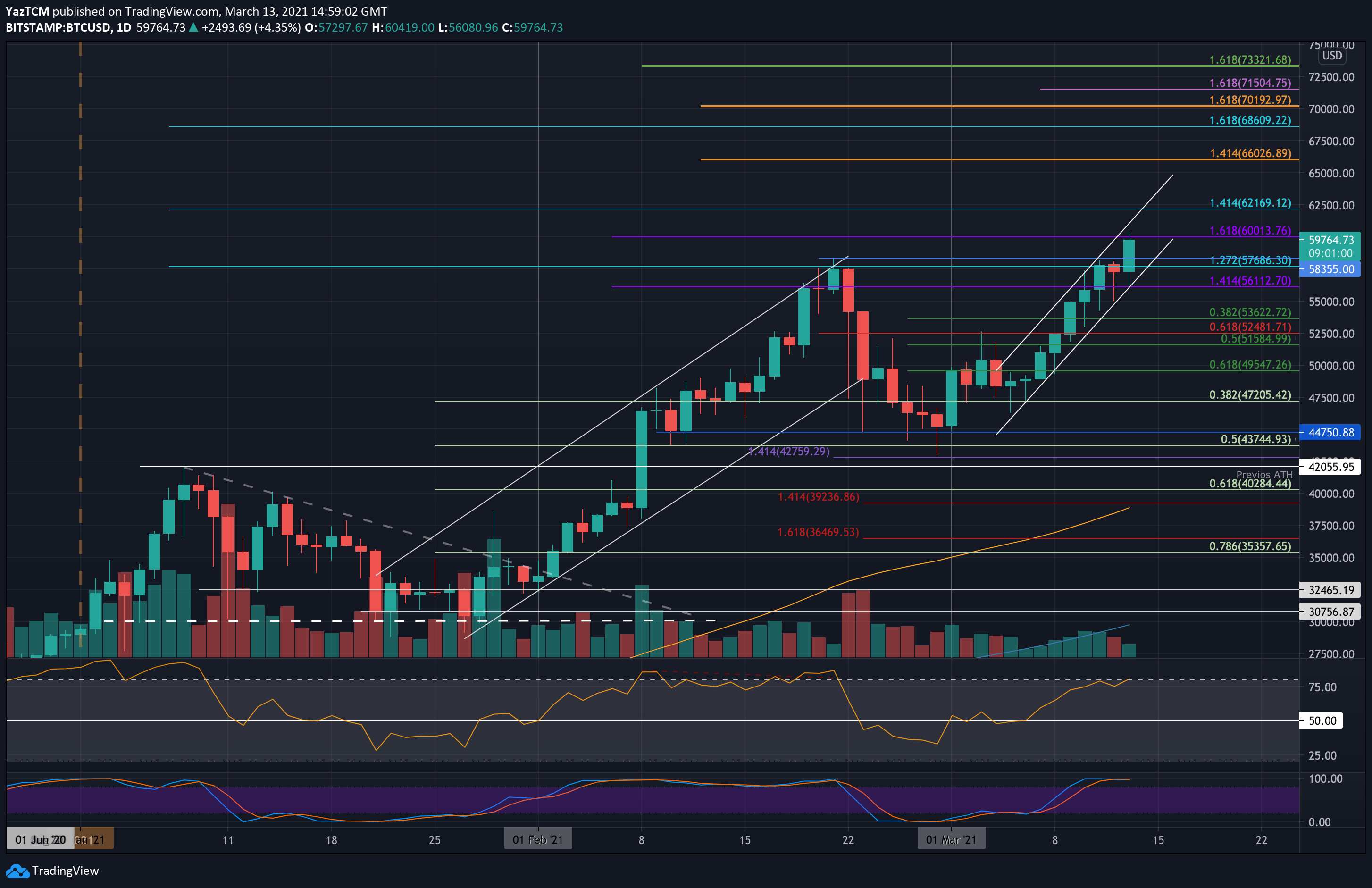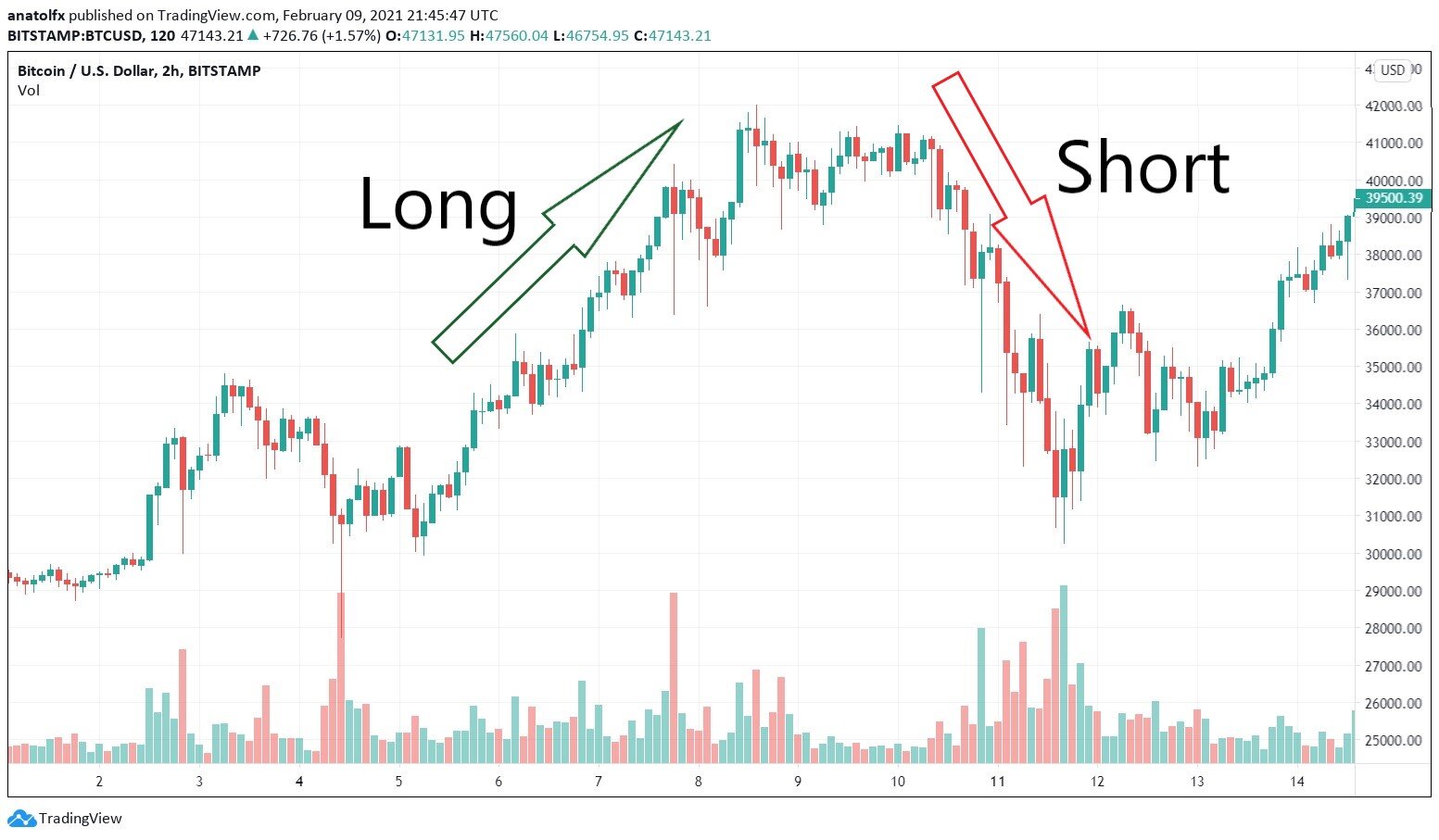Introduction
When it comes to the world of cryptocurrencies, one of the most intriguing aspects for investors and enthusiasts is understanding how the price of these digital assets is determined. Unlike traditional financial markets such as stocks or commodities, cryptocurrencies operate in a decentralized and volatile landscape, making their pricing mechanisms unique and highly influenced by a range of factors.
In this article, we will explore the various factors that contribute to the determination of cryptocurrency prices. While there is no single formula or algorithm that can precisely forecast the price of a cryptocurrency, understanding these key elements can help investors make more informed decisions and navigate the ever-changing crypto market.
It’s important to note that cryptocurrencies are not tied to any physical asset or underlying value. Their worth is predominantly driven by market demand and sentiment, influenced by a combination of factors such as trading volume, liquidity, market depth, market manipulation, news, events, regulatory environment, technical analysis, and fundamental analysis.
By delving into each of these factors, we can begin to gain a better understanding of the complex and dynamic nature of cryptocurrency pricing.
Market Demand and Supply
Market demand and supply play a crucial role in determining the price of cryptocurrencies. These digital assets operate on decentralised platforms where buyers and sellers interact freely, creating a market driven by the forces of supply and demand.
When the demand for a particular cryptocurrency exceeds its supply, the price tends to increase. Conversely, when the supply surpasses the demand, the price may decrease. This relationship between demand and supply is influenced by various factors such as market sentiment, adoption rates, and utility of the cryptocurrency.
For instance, if a cryptocurrency gains widespread adoption and becomes increasingly utilized in various industries and sectors, the demand for that specific asset may increase. This higher demand, coupled with a limited supply, can drive up the price of the cryptocurrency.
Additionally, market sentiment plays a vital role in determining the demand for cryptocurrencies. Positive sentiment, driven by factors such as favorable news, partnerships, or developments, can attract more investors, leading to an increased demand and subsequently a rise in price. On the other hand, negative sentiment or regulatory uncertainties may result in a decrease in demand and a subsequent fall in price.
Furthermore, the supply of cryptocurrencies can also impact their price. Some cryptocurrencies have a predetermined maximum supply, such as Bitcoin, which has a capped supply of 21 million coins. As the scarcity of a cryptocurrency increases due to limited supply, its price can experience upward pressure.
It’s important to note that market demand and supply for cryptocurrencies can be highly volatile and subject to rapid fluctuations. Factors such as market speculation, investor sentiment, and macroeconomic conditions can influence the demand and supply dynamics, leading to price volatility and unpredictability.
Trading Volume and Liquidity
Trading volume and liquidity are key factors that contribute to the determination of cryptocurrency prices. Trading volume refers to the total number of coins or tokens exchanged on various crypto exchanges within a specific time frame, often measured in terms of daily or monthly trading volume.
Higher trading volumes indicate increased market activity and interest in a particular cryptocurrency, which can have a significant impact on its price. When the trading volume is high, it generally signifies a liquid market, where buyers and sellers can easily enter and exit positions without causing significant price fluctuations.
Liquidity, on the other hand, refers to the ease with which a cryptocurrency can be bought or sold without causing a significant change in its price. A highly liquid market allows for large volumes of trading without affecting the price significantly, while illiquid markets can experience volatile price swings due to low trading volumes.
High trading volume and liquidity are generally desirable for investors as they provide more opportunities for buying and selling at the desired price levels. Cryptocurrencies with higher liquidity tend to have narrower bid-ask spreads, making it easier to execute trades without incurring substantial costs.
Moreover, trading volume and liquidity can also indicate the market depth of a cryptocurrency. Market depth refers to the extent of buy and sell orders available at various price levels. A market with high depth has a large number of buy and sell orders, indicating a well-established market where large transactions can be executed without significantly impacting the price.
It’s worth noting that trading volume and liquidity can vary significantly across different cryptocurrencies. Popular and well-established cryptocurrencies, such as Bitcoin and Ethereum, tend to have higher trading volumes and liquidity compared to smaller, less-known tokens. This is partly due to the higher levels of trust, adoption, and recognition associated with these major cryptocurrencies.
Overall, trading volume and liquidity are essential factors to consider when assessing the price dynamics of cryptocurrencies. Higher trading volumes and liquidity indicate a more active and liquid market, which can contribute to more stable price movements and increased investor confidence.
Market Depth and Order Books
Market depth and order books play a significant role in understanding the price dynamics of cryptocurrencies. Market depth refers to the quantity of buy and sell orders available at different price levels for a particular cryptocurrency. It provides insight into the levels of supply and demand in the market.
The order book, on the other hand, is a real-time record of all outstanding buy and sell orders for a cryptocurrency on a specific exchange. It displays the quantity of coins or tokens available at various price levels, allowing traders to assess the liquidity and market depth.
Market depth and order books enable traders to gauge the potential impact of their buy or sell orders on the market. If there is a significant number of buy orders at a specific price level, it indicates strong demand and may contribute to an upward movement in the price. Similarly, if there are substantial sell orders at a certain price level, it suggests supply pressure and may lead to a downward price movement.
Order books also provide valuable information about support and resistance levels. Support levels are price levels at which a cryptocurrency has historically found buyers, causing the price to bounce back upwards. Resistance levels, on the other hand, indicate price levels where a cryptocurrency has historically encountered selling pressure, causing the price to stall or decline.
Traders and investors often use order book data to determine the optimal entry and exit points for their trades. By analyzing the order book, they can identify areas of high liquidity and potential order imbalances, which may indicate a higher probability of price reversals or continuations.
It’s important to note that order books and market depth can change rapidly as new buy and sell orders are placed or executed. Market manipulation, such as spoofing or layering, can also distort the order book data temporarily. Therefore, it is crucial to consider the reliability and accuracy of the order book information and use it in conjunction with other market analysis techniques.
Overall, understanding market depth and monitoring the order books can provide valuable insights into the supply and demand dynamics of cryptocurrencies, helping traders and investors make more informed decisions in the ever-changing crypto market.
Market Manipulation and Price Impact
Market manipulation is a critical aspect that can impact the pricing of cryptocurrencies. Due to the decentralized and relatively unregulated nature of the crypto market, it is susceptible to various forms of manipulation that can significantly influence prices.
One common form of manipulation is known as “pump and dump,” where a group or individual artificially inflates the price of a cryptocurrency by spreading positive news or creating hype, only to sell off their holdings at the peak and cause the price to plummet. This can lead to significant losses for unsuspecting investors who are caught up in the manipulated buying frenzy.
Another form of manipulation is known as “spoofing,” where traders place fake buy or sell orders to deceive other market participants about the true levels of supply or demand. This manipulation tactic can create false market signals and distort the order book, leading to price fluctuations that do not accurately reflect market conditions.
Additionally, “wash trading” is a manipulative practice in which traders buy and sell a cryptocurrency to create the illusion of increased trading volume. By artificially inflating trading volume, wash trading can make a cryptocurrency appear more liquid and attractive to potential investors, but it does not reflect genuine market activity.
Market manipulation can have significant price impacts on cryptocurrencies. In cases where manipulation is widespread and impactful, the price movements may deviate from the fundamental value of the cryptocurrency. This can make it challenging for traders and investors to rely solely on technical and fundamental analysis when predicting price movements.
The crypto market is becoming more aware of the risks associated with manipulation, and there are ongoing efforts to enhance transparency and regulate the market. Increased regulatory oversight and measures to detect and prevent manipulation can help create a more reliable and trustworthy cryptocurrency market.
It’s important for investors to stay vigilant and conduct thorough research before making investment decisions. Understanding the potential risks of market manipulation and being able to differentiate between genuine market movements and artificial price manipulation can help mitigate losses and make more informed trading choices.
Market Sentiment and Investor Behavior
Market sentiment and investor behavior play a significant role in shaping the price movements of cryptocurrencies. The sentiment refers to the prevailing attitude or feeling of market participants towards a particular cryptocurrency or the overall crypto market. It can range from bullish (positive sentiment) to bearish (negative sentiment) or a mix of both.
Market sentiment can be influenced by a variety of factors, including news, events, social media trends, and the overall economic climate. Positive news such as regulatory advancements, partnerships, or adoption by large institutions can create bullish sentiment and lead to increased buying activity.
Conversely, negative news or events like security breaches, regulatory crackdowns, or negative market sentiment can create a bearish outlook and result in increased selling pressure. Fear, uncertainty, and doubt (FUD) can significantly impact investor behavior, leading to panic selling and price decline.
Investor behavior, driven by market sentiment, can also contribute to price volatility. When the market sentiment is positive, investors may exhibit FOMO (Fear of Missing Out) and rush to buy, driving up the price. Similarly, during periods of negative sentiment, investors may engage in panic selling, exacerbating price declines.
The herd mentality, where investors tend to follow the actions and decisions of others, can further amplify market sentiment and influence price movements. When a significant number of market participants perceive a cryptocurrency as valuable or overvalued, it can create a self-reinforcing cycle of buying or selling.
Understanding market sentiment and investor behavior is essential for traders and investors as it allows them to anticipate potential price movements. Monitoring social media platforms, news sources, and sentiment analysis tools can help gauge market sentiment and sentiment shifts, providing valuable insights for decision-making.
However, it’s important to exercise caution, as market sentiment can sometimes be irrational and driven by emotions rather than rational analysis. Therefore, it is recommended to combine sentiment analysis with other fundamental and technical analysis techniques for a more comprehensive view of the market.
Ultimately, market sentiment and investor behavior are significant drivers of cryptocurrency prices, and staying informed about the sentiment and understanding its impact on market dynamics can provide a competitive edge in the crypto market.
News and Events
News and events have a significant impact on the pricing of cryptocurrencies. The crypto market is highly responsive to news related to cryptocurrencies, blockchain technology, regulations, partnerships, and industry developments.
Positive news, such as a major institution adopting blockchain technology or a government embracing cryptocurrencies, can create a surge in market demand and drive up the price of related cryptocurrencies. These types of events signal increased adoption and confidence in the cryptocurrency industry, attracting more investors.
Conversely, negative news or events can have a detrimental effect on cryptocurrency prices. Examples include regulatory actions, security breaches, hacking incidents, or negative public sentiment. Such events can lead to a loss of investor confidence, resulting in a sell-off and downward pressure on prices.
In addition to major events, even smaller news and announcements can impact prices, especially for less established cryptocurrencies. Projects releasing updates, partnerships, or innovative developments can generate positive sentiment and attract investor attention, driving up the prices of the associated cryptocurrencies.
Timing is also critical when it comes to news and events. The immediate reaction of the market to news can be volatile, with prices experiencing sudden spikes or drops. Therefore, being informed and staying updated on the latest news and events is crucial for traders and investors in order to make well-timed decisions.
However, it is essential to approach news and events with caution. Sometimes, news can be misleading or exaggerated, and it is crucial to verify the credibility and accuracy of the information before making any trading decisions.
Moreover, the market’s reaction to news may not always correspond with the initial expectations. The market encapsulates a multitude of factors and sentiments, and its interpretation of news and events may differ from individual expectations or predictions.
In summary, news and events significantly influence cryptocurrency prices. Positive news and developments can attract buyers and increase demand, while negative news can lead to a decrease in demand and subsequent price decline. Staying informed and analyzing the impact of news and events on the market sentiment is key to navigating the volatile crypto market successfully.
Regulatory Environment
The regulatory environment plays a crucial role in shaping the pricing of cryptocurrencies. As the popularity of cryptocurrencies continues to grow, governments and regulatory bodies around the world are developing frameworks to address the unique challenges and risks associated with digital assets.
Regulatory actions can have a significant impact on cryptocurrency prices. Positive regulatory developments, such as clear guidelines, regulatory acceptance, or favorable regulations, can instill confidence in the market and attract institutional investors. This increased confidence and legitimacy often result in higher demand and subsequently drive up prices.
Conversely, negative regulatory actions or uncertainties can have a detrimental effect on cryptocurrency prices. Regulatory crackdowns, bans, or restrictions can create fear and uncertainty among investors, leading to sell-offs and price declines. The lack of clarity and inconsistent regulations can also hinder innovation and adoption in the crypto space, negatively impacting prices.
Market participants closely monitor regulatory updates and announcements as part of their fundamental analysis. Changes in regulations, especially in influential regions like the United States, European Union, or China, can have far-reaching effects on the broader crypto market.
It’s important to recognize that the regulatory landscape for cryptocurrencies is continuously evolving. Different jurisdictions have varying approaches and stances towards digital assets, and regulation can change rapidly. Traders and investors must stay updated on regulatory developments and understand the potential impact on the cryptocurrencies they hold or wish to invest in.
The increasing regulatory scrutiny and efforts to combat illicit activities, such as money laundering and terrorist financing, aim to bring more stability and trust to the cryptocurrency market. Enhanced regulations can provide a safer and more secure environment for investors, which may contribute to the long-term growth and stability of the market.
However, it is essential to note that while regulations can provide some level of protection, they can also restrict certain aspects of the cryptocurrency ecosystem. Balancing regulatory oversight with innovation and financial freedom is a continuous challenge faced by regulatory bodies and industry participants.
In summary, the regulatory environment has a significant impact on the pricing of cryptocurrencies. Positive regulatory developments can boost investor confidence and drive up prices, while negative regulatory actions or uncertainties can lead to price drops. Staying informed about regulatory updates and understanding their implications is crucial for traders and investors in the dynamic crypto market.
Technical Analysis
Technical analysis is a popular method used by traders to predict future price movements based on historical market data, primarily focusing on price patterns and trading volume. It involves the use of various tools and indicators to identify trends, support and resistance levels, and potential entry and exit points.
One of the fundamental principles of technical analysis is that historical price and volume data can provide insights into future price movements. Chart patterns, such as triangles, head and shoulders, or double tops/bottoms, are often analyzed to identify potential trend reversals or continuations.
Support and resistance levels are also crucial elements of technical analysis. Support levels represent price levels at which buying pressure outweighs selling pressure, preventing the price from falling further. Resistance levels, on the other hand, indicate price levels at which selling pressure outweighs buying pressure, preventing the price from rising further.
Technical analysis also incorporates the use of various indicators, such as moving averages, oscillators, and trend lines, to assist in making trading decisions. These indicators help traders identify overbought or oversold conditions, potential trend changes, and market momentum.
Additionally, volume analysis is a vital aspect of technical analysis. Trading volume provides insight into the strength and validity of price movements. Significant price movements accompanied by high trading volume are considered more reliable compared to those with low trading volume.
It’s important to recognize that technical analysis is based on the assumption that market participants’ behavior repeats itself over time, and historical patterns can be used to predict future price movements. However, it is not foolproof, and market conditions can change, rendering certain indicators or patterns less reliable.
Traders who utilize technical analysis must also be aware of the limitations and potential pitfalls. False signals, whipsaws, and discrepancies between different indicators or timeframes are common challenges faced by technical analysts. Therefore, it is important to use technical analysis in conjunction with other forms of analysis and risk management strategies.
Furthermore, it is worth noting that technical analysis alone may not fully capture the impact of external factors, such as news events or regulatory developments, which could create sudden and significant price movements that cannot be predicted solely through technical analysis.
In summary, technical analysis is a widely used method for predicting price movements based on historical market data. It involves the use of various tools, indicators, and chart patterns to identify trends and potential entry and exit points. While technical analysis has its limitations, it can provide valuable insights for traders in analyzing the crypto market.
Fundamental Analysis
Fundamental analysis is a method used by traders and investors to evaluate the intrinsic value of a cryptocurrency based on its underlying factors. Unlike technical analysis, which focuses on historical price patterns, fundamental analysis examines the fundamental aspects of a cryptocurrency to make investment decisions.
One of the key components of fundamental analysis is an examination of the project’s whitepaper. The whitepaper outlines the cryptocurrency’s mission, technology, use cases, target market, and future plans. A thorough analysis of the whitepaper helps investors assess the viability and potential of the project.
In addition to the whitepaper, fundamental analysis involves evaluating the development team and their expertise. The skills, experience, and track record of the team members play a significant role in determining the potential success of the project.
Furthermore, market adoption and utility are crucial factors considered in fundamental analysis. A cryptocurrency with a widespread acceptance and real-world application is more likely to have a higher intrinsic value. The number of users, partnerships with reputable companies, and integration with existing systems can provide insights into the market adoption of the cryptocurrency.
Economic factors, such as supply and demand dynamics, also shape the fundamental analysis. The total supply of the cryptocurrency and its inflation rate can impact its scarcity and value. Additionally, factors like economic growth, global adoption, and regulatory changes can influence the demand for cryptocurrencies in general.
Financial analysis is another aspect of fundamental analysis, which involves reviewing the project’s financials. This includes assessing the revenue-generating potential, profit margins, cash flow, and funding mechanisms. Understanding the financial health of a cryptocurrency project helps investors assess its sustainability and long-term viability.
Finally, keeping up with industry trends, news, and events is an essential part of fundamental analysis. Monitoring developments in the cryptocurrency market, regulatory changes, technological advancements, and competition can provide valuable insights into the future prospects of a cryptocurrency.
It’s important to note that fundamental analysis is a combination of subjective and objective factors. While objective factors such as team expertise and financials can be quantified and analyzed, subjective factors such as market sentiment and future potential are open to interpretation.
Additionally, fundamental analysis takes into account long-term trends and provides a broader perspective on the underlying value of a cryptocurrency. It is often used by long-term investors who seek to identify undervalued assets with strong growth potential.
In summary, fundamental analysis is a method of evaluating the intrinsic value of a cryptocurrency based on its underlying factors. It involves assessing the project’s whitepaper, team, adoption, utility, economic factors, financials, and industry trends. Fundamental analysis provides a long-term perspective for investors to make informed decisions based on the intrinsic value of a cryptocurrency.
Conclusion
Understanding how the price of cryptocurrencies is determined is crucial for traders and investors in navigating the dynamic and volatile crypto market. While there is no single formula or algorithm that can precisely predict cryptocurrency prices, several key factors contribute to their determination.
Market demand and supply, trading volume and liquidity, market depth and order books, market manipulation and price impact, market sentiment and investor behavior, news and events, regulatory environment, technical analysis, and fundamental analysis all play significant roles in shaping the price dynamics of cryptocurrencies.
Market demand and supply, influenced by factors such as adoption rates and utility, can drive cryptocurrencies’ prices up or down. Trading volume and liquidity indicate market activity and can impact price stability. Market depth and order books provide insights into supply and demand levels, helping traders anticipate potential price movements.
Market manipulation can distort the true market conditions, affecting price accuracy. Monitoring market sentiment and investor behavior is crucial for understanding buying and selling patterns. News and events, both big and small, can generate market trends and impact investor sentiment.
The regulatory environment, including both positive and negative developments, can significantly influence cryptocurrency prices. Technical analysis aids in predicting future price movements based on historical market data, while fundamental analysis evaluates the intrinsic value of cryptocurrencies based on underlying factors.
By considering all these factors and conducting thorough research and analysis, traders and investors can enhance their decision-making process in the crypto market. It is essential to be aware of the limitations and uncertainties associated with cryptocurrency pricing while using a combination of strategies and tools to mitigate risks.
As the cryptocurrency market continues to evolve, it is important to stay updated on the latest market trends, technological advancements, and regulatory developments. By staying informed, traders and investors can make more informed decisions and adapt to the ever-changing landscape of the cryptocurrency market.

























